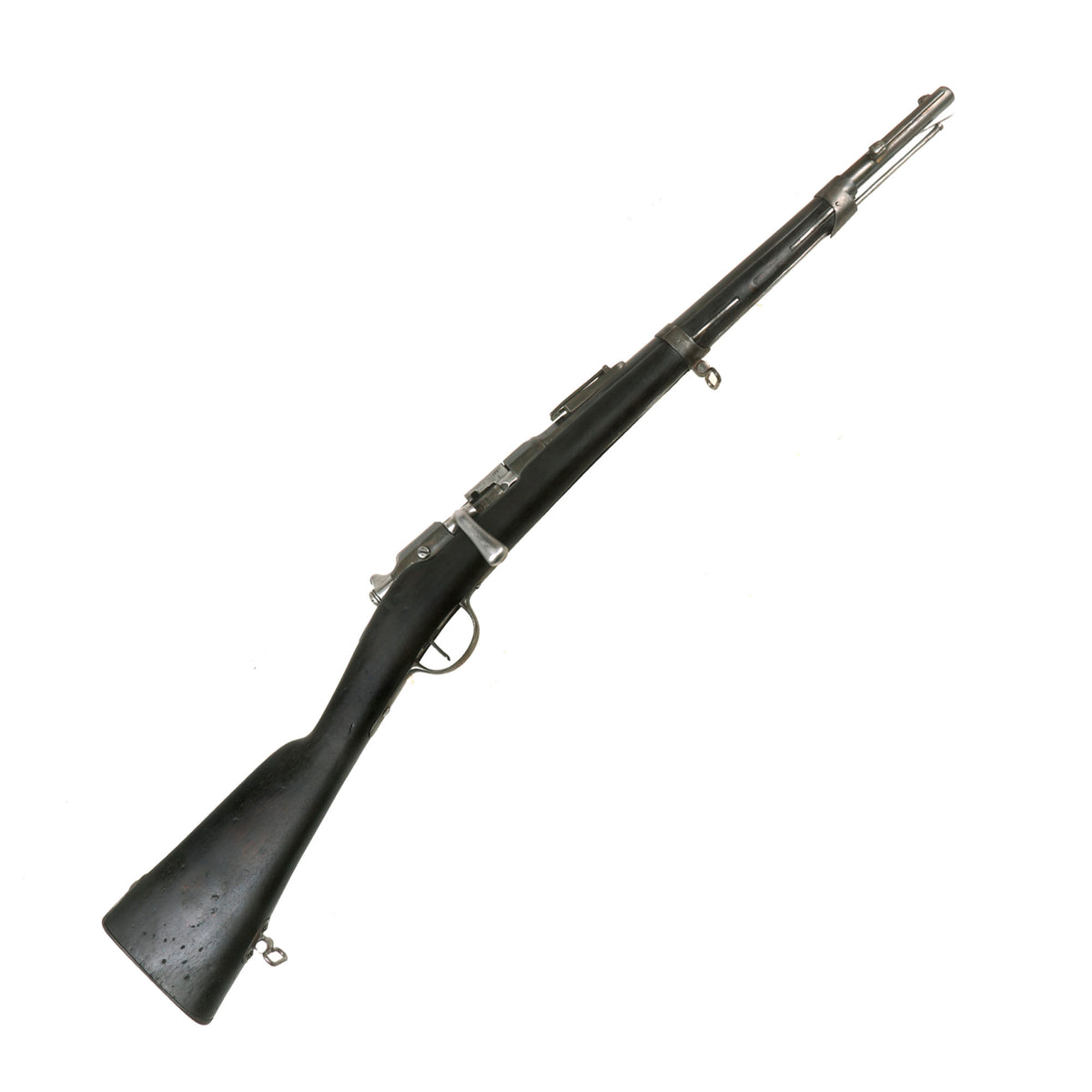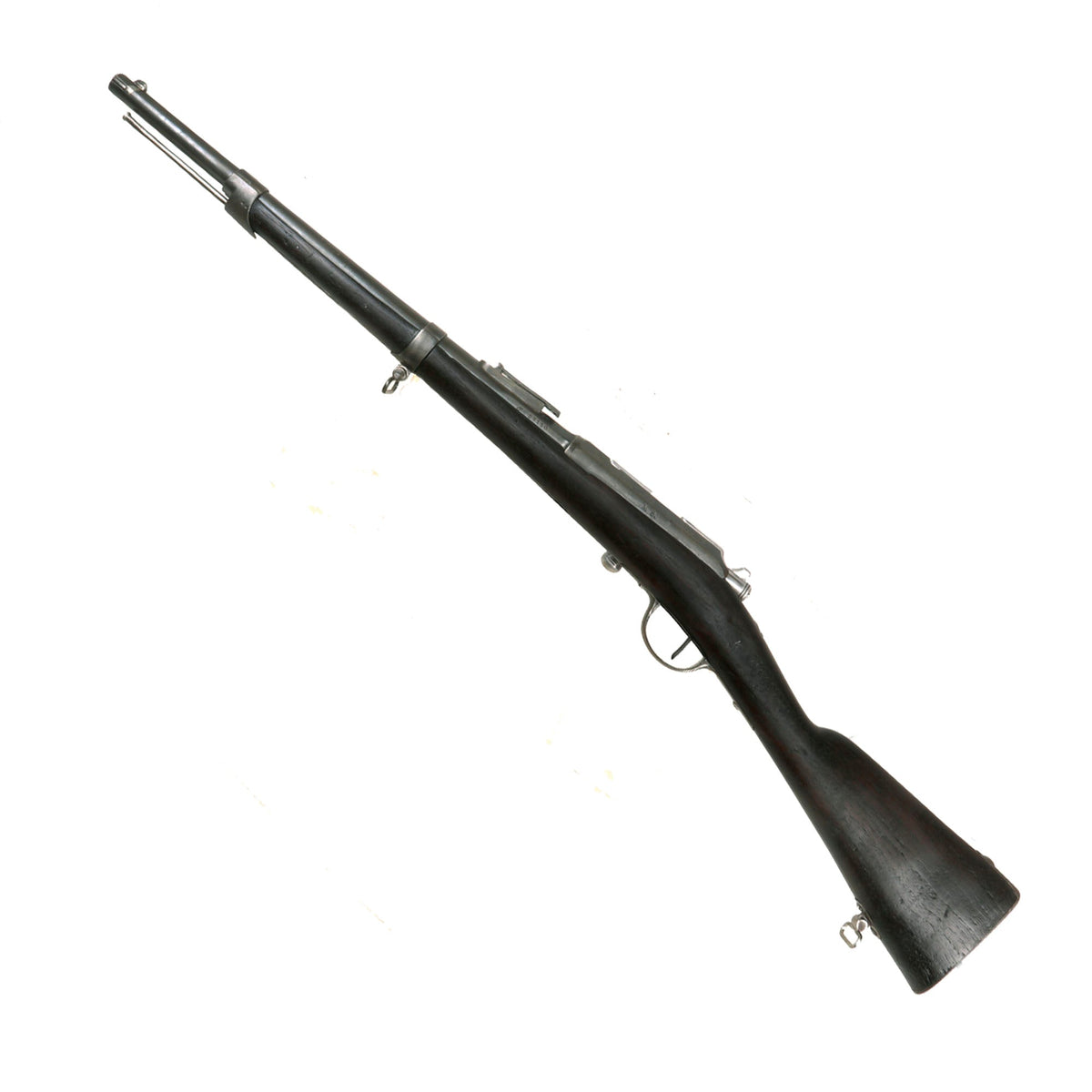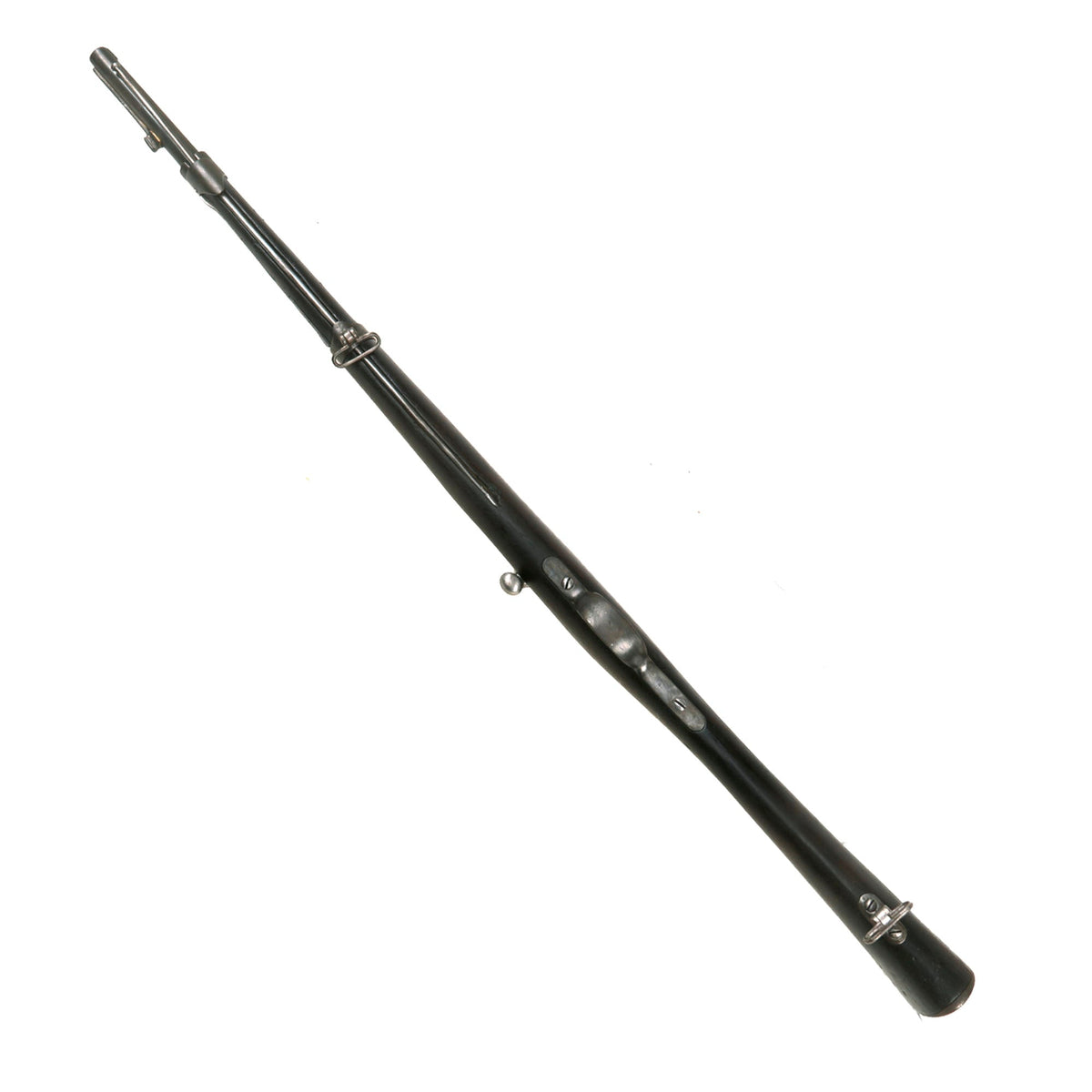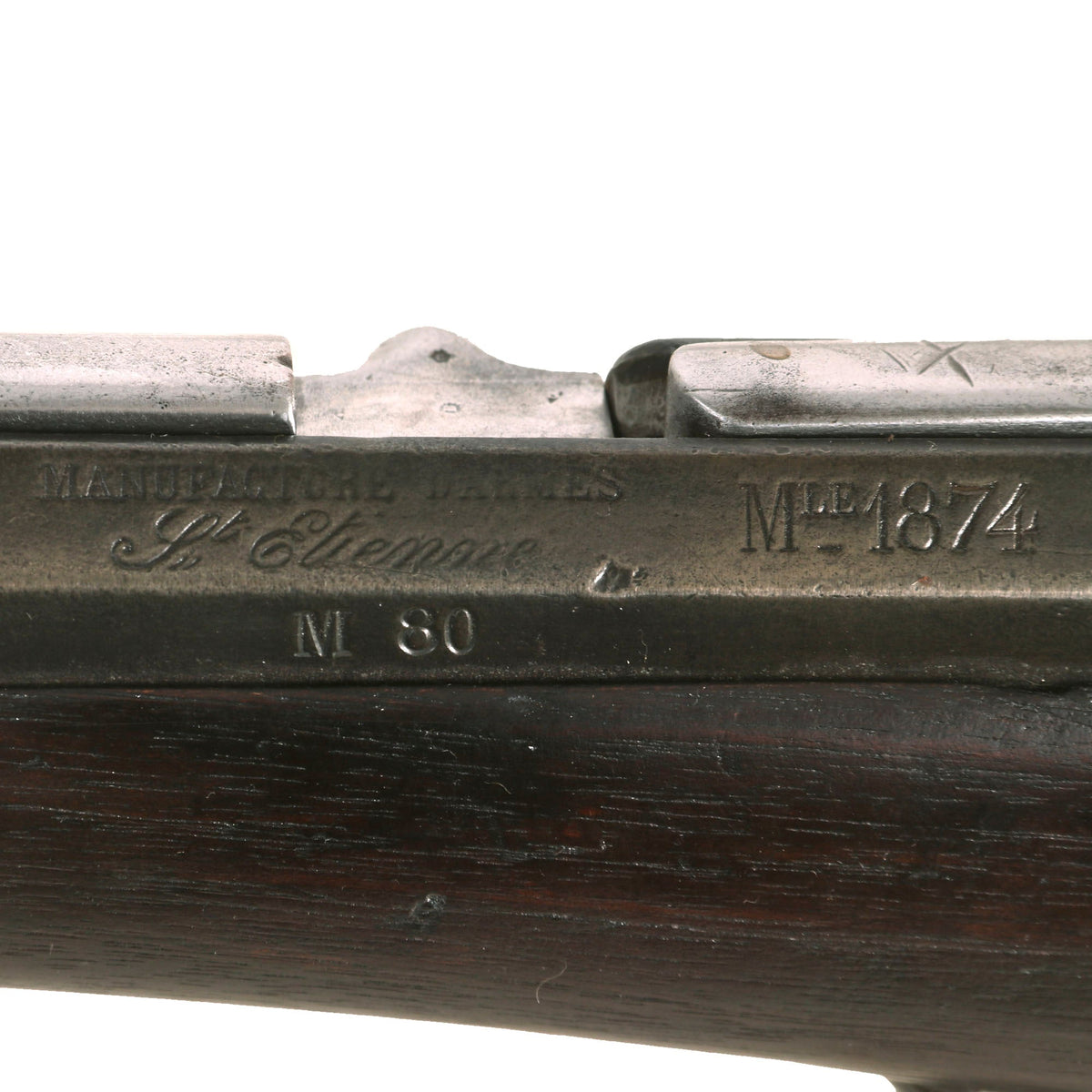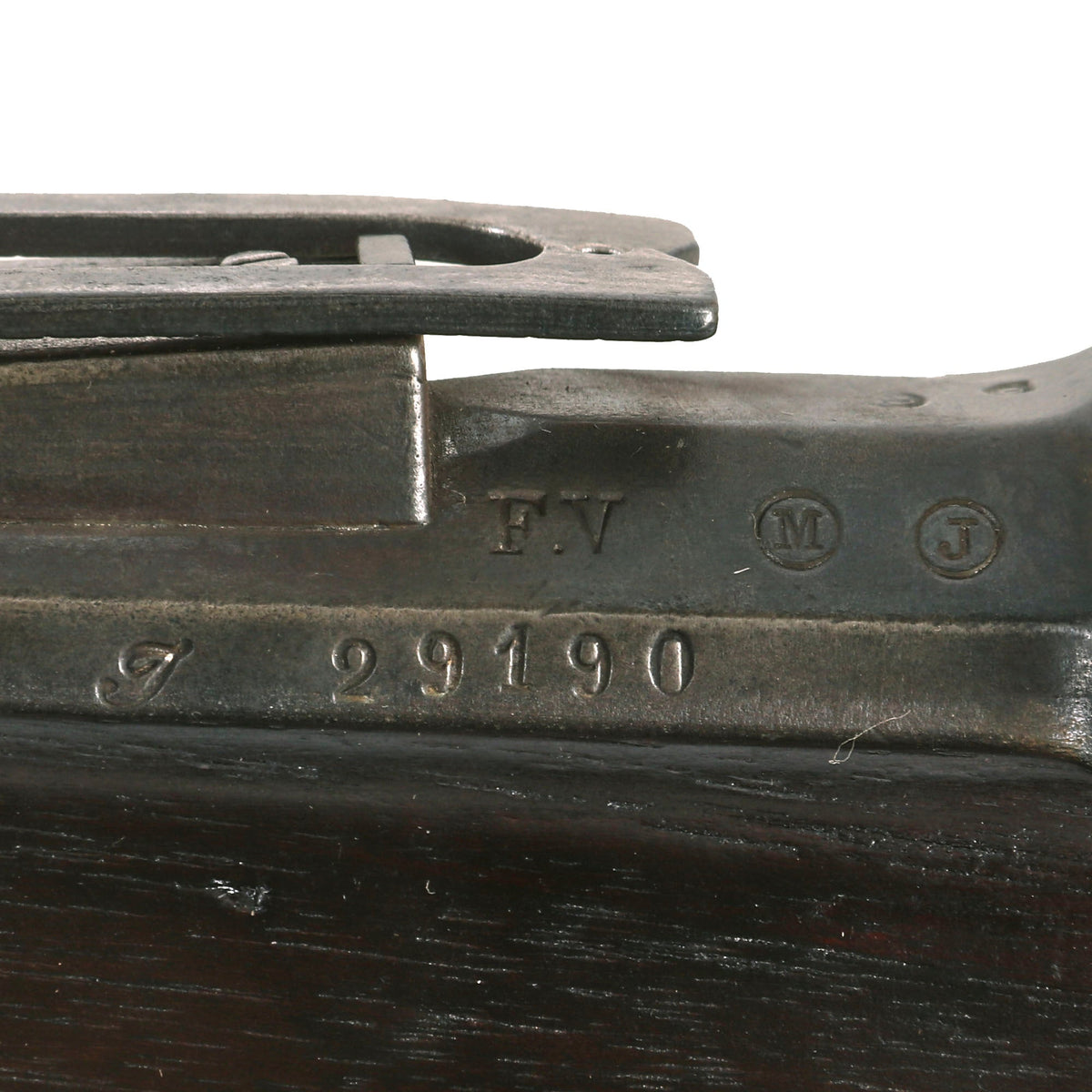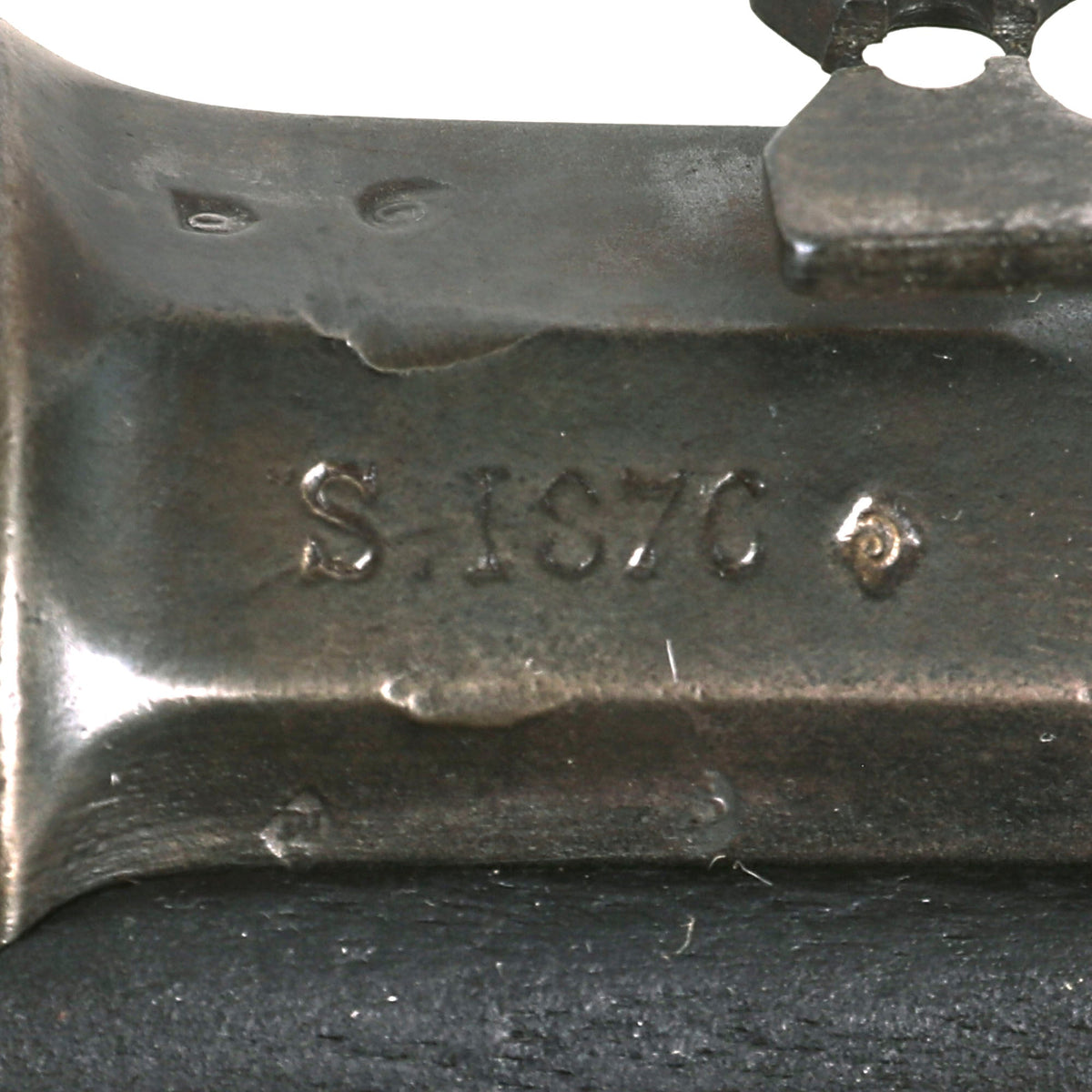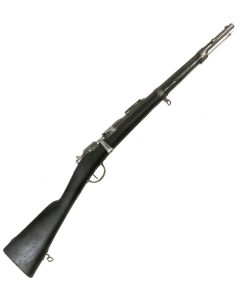Original French Gras Modèle 1874 M80 Cavalry Carbine by St. Etiénne dated 1876 – Serial J 29190 Original Items
$ 695,00 $ 208,50
Original item: Only One Available. The Fusil Gras Modèle 1874 M80 was a French service rifle of the 19th century. The Gras used by the French Army was an adaptation to metallic cartridge of the Chassepot breech-loading rifle by Colonel Basile Gras.
This is a very interesting example of the shorter Gras Carbine, which does show some signs of originally having been a longer weapon, later shortened. It has a long range rear sight, not typically seen on carbines, and we can also see a filled in channel on the stock for a band spring, at the correct location for a rifle. The carbine is fitted with all IRON mounts, which the French generally indicated for Army use. The barrel is about 19 ¾” in length, with an overall length of 38 ¾”, and it is fitted with the correct down turned bolt handle, which prevented it from getting tangled in the horse’s tack.
The carbine features two sling swivels and a bayonet stand on the right side of the barrel muzzle. These compact bolt action Short Rifles which were single shot were ideal for use by the Cavalry, and were usually used with the long Mle 1866 Saber bayonets designed for the Chassepot. These are modifications we usually see on Colonial Service “Camel Carbines”, however this example is fitted with iron, not the brass used in the Colonies, giving it some great research potential.
The left side of the receiver marked MANUFACTURE D’ARMES / St. Étienne / M 80 next to MLE 1874 indicating manufacture at the government arsenal at St. Étienne. The “M 80” is for a later update to the action that added a channel for gas escape to the bolt and receiver, in the case of a ruptured primer. The rifle has arsenal proofs on most parts, and also is marked S.1876, indicating original manufacture in 1876 (S Is the St. Étienne Prefix). The short rifle retains its serial number of J 29190 on the barrel, with the bolt being an arsenal replacement with mismatched serial numbers. French rifles of this era generally did not have the receiver marked with a visible serial.
Overall condition of the carbine is very good considering the age and what it has been through, with the metalwork overall showing a matte steel patina from years of cleaning. There are dents and some cracks in the stock, as well the expected dents, scratches, and chips expected on a weapon that was in service for decades. It has a rather dark color, and is quite worn down, with a few repairs we can see. The original cartouche and plug on the right side of the stock were removed, and then plugged with wood filler.
The bore is actually in good condition, with strong lands and grooves and a mostly bright finish on the lands. There is just a bit of fouling present in the grooves, and a bit of oxidation towards the end of the barrel near the muzzle. The carbine cycles correctly with a crisp dry fire, and both the extractor and firing pin are present and functional. There is a cleaning rod under the barrel, which looks to be a replacement fabricated long ago.
A very interesting French Gras Rifle, converted to a carbine but NOT fitted with brass indicating colonial service. Fully restored and ready to research and display!
Specifications-
Year of Manufacture: Circa 1870 – Converted circa 1880, and again later
Caliber: 11×59mmR Gras
Cartridge Type: Centerfire Cartridge
Barrel Length: 19 ¾ Inches
Overall Length: 38 ¾ Inches
Action type: Bolt-Action
Feed System: Single Shot
History of the Gras rifle:
A caliber of 11mm and used black powder centerfire cartridges that weighed 25 grams. It was a robust and hard-hitting weapon, but it had no magazine and so could only fire one shot after loading. It also had a triangular-shaped sword bayonet, known as the Model 1874 “Gras” Sword Bayonet. It was replaced by the Lebel rifle in 1886, the first rifle to use smokeless gunpowder. In the meantime, about 400,000 Gras rifles had been manufactured.
The metallic-cartridge Gras was manufactured in response to the development of the metallic cartridge designed by Colonel Boxer in 1866 (Boxer cartridge), and the British 1870 Martini-Henry rifle. Those were soon emulated by the Germans with the 1871 Mauser.
The Hellenic Army adopted the Gras in 1877, and it was used in all conflicts up until the Second World War. It became the favorite weapon of Greek guerrilla fighters, from the various revolts against the Ottoman Empire to the resistance against the Axis, acquiring legendary status. The name entered the Greek language, and Grades (γκράδες) was a term colloquially applied to all rifles during the first half of the 20th century. It was manufactured by Manufacture d’armes de Saint-Étienne, one of several government-owned arms factories in France. However most of the Gras rifles (60,000) used by the Hellenic military were manufactured under license by Steyr in Austria.
The Gras rifle was partly the inspiration for the development of the Japanese Murata rifle, Japan’s first locally-made service rifle.
NOTE: International orders of antique firearms MUST be shipped using UPS WW Services (courier). USPS Priority Mail international will not accept these. International customers should always consult their country’s antique gun laws prior to ordering.
Fast Shipping with Professional Packaging
Thanks to our longstanding association with UPS FedEx DHL, and other major international carriers, we are able to provide a range of shipping options. Our warehouse staff is expertly trained and will wrap your products according to our exact and precise specifications. Prior to shipping, your goods will be thoroughly examined and securely secured. We ship to thousands clients each day across multiple countries. This shows how we're dedicated to be the largest retailer on the internet. Warehouses and distribution centres can be located throughout Europe as well as the USA.
Note: Orders with more than one item will be assigned a processing date depending on the item.
Before shipping before shipping, we'll conduct a thorough inspection of the items you have ordered. Today, the majority of orders will be delivered within 48 hours. The delivery time will be between 3-7 days.
Returns
The stock is dynamic and we cannot completely manage it because multiple stakeholders are involved, including our factory and warehouse. So the actual stock may alter at any time. It's possible that you may not receive your order once the order has been made.
Our policy is valid for a period of 30 days. If you don't receive the product within 30 days, we are not able to issue a refund or an exchange.
You can only return an item if it is unused and in the same state as the day you received it. You must have the item in its original packaging.
Related products
Uncategorized
Uncategorized
Uncategorized
Uncategorized
Uncategorized
Uncategorized
Uncategorized
Uncategorized
Uncategorized
Angolan Rebel 1970s era 60mm Inert Display Mortar from Angolan Civil War Original Items
Uncategorized
Uncategorized
Band of Brothers ORIGINAL GERMAN WWII Le. F.H. 18 10.5cm ARTILLERY PIECE Original Items
Uncategorized
Uncategorized
Armoured Fighting Vehicles of the World: AFVs of World War One (Hardcover Book) New Made Items
Uncategorized
Uncategorized
Uncategorized
Uncategorized
